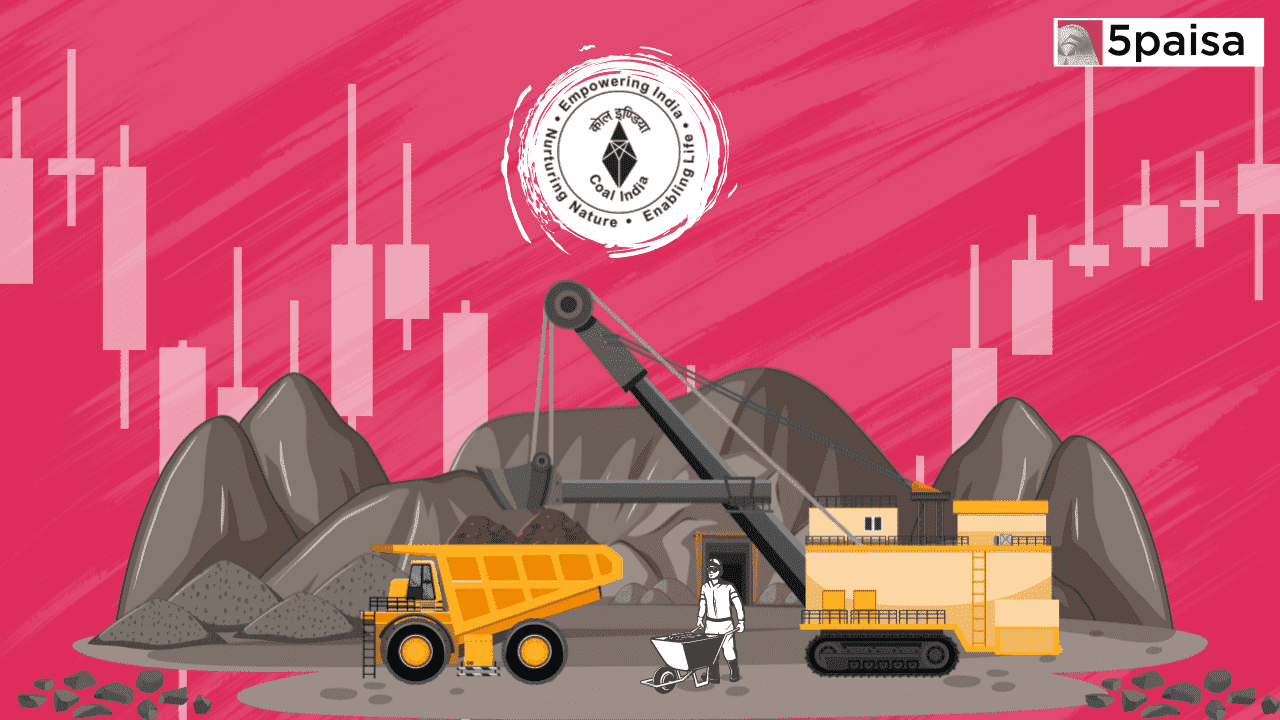Once more, Coal India Limited is a state-owned company. This corporation deals in the sale of coal and goods derived from coal for industrial use. Coking coal, semi-coking coal, non-coking coal, washed coal, and coal fines are among the company's product offerings.
Coal India supplies around 82% of the country's total output of coal, making it one of the major coal-producing nations in the world.
Coal India's market value was Rs. 1,44,054 crores as of July 10, 2023, and its shares were trading at Rs. 234.90 a share on the NSE and the BSE, respectively.
• Coal India Limited
A Maharatna Enterprise
Following the nationalisation of the coal industry, Coal India was founded in 1973 under the name Coal Mines Authority Ltd. [1] It is a "Maharatna" business that reports to India's Ministry of Coal and has its corporate headquarters in Kolkata, West Bengal.
Market Leadership
CIL is the world's largest producer of coal and one of the greatest employees in the business sector.
Industry Presence
CIL has activities in 8 different Indian states. Additionally, it has a fully operational mining firm in Mozambique with the name of Coal India Africana Limitada.
Monopoly Miner
Coal India Ltd. is the nation's top producer of coal, accounting for over 80% of all coal output. More than 80% of its overall dispatch is supplied to the electricity industry.
Mining Initiatives
In FY 2021–2022, the BOD of CIL and its subsidiary firm authorised 16 mining projects with a sanctioned capacity of 99.84 MT annually. In the following years, these initiatives will begin to contribute. Five mining projects with a 12.60 MT annual capacity were finished in FY22.
Production potential
Eight Indian provincial states total 84 mining regions under the control of CIL. As of April 1, 2022, it has 318 mines, of which 141 were underground, 158 were opencast, and 19 were mixed mines. [2] 13 coal washeries are now in operation, with a total working washing capacity of 24.94 MTY. Of these, 11 are washeries for coking coal, while the remaining 2 are washeries for non-coking coal, with operational capacities of 13.94 MTY and 11 MTY, respectively.
Low Utilisation of Capacity
About 1733 M. Cum of coal and overburden were processed by CIL in total during FY22. Thus, CIL's overall system capacity utilisation came out to be at 77%.
Product Selection
Coke, semi-coke, non-coke, washed and beneficiated coal, rejects, middling, CIL coke, tar, heavy oil, light oil, soft pitch, and other value-added goods.
Big-time consumers
Coal Cement, fertiliser, brick, kilns, and a variety of other industries are among the largest users in India, accounting for 82% of all output.
Capex
The company spent Rs. 15,400 crore on capex during FY22. It was entirely supported by internal resources and fueled by a number of events, including an expedited HEMM procurement procedure, the purchase of land, coal evacuation activities, the upgrading of the rail infrastructure, the prompt finalization and execution of contracts, joint ventures, etc.
Subsidiaries
On April 16, 2021, the Company established two totally owned subsidiaries: CIL Solar PV Limited for the manufacture of solar value chain (Ingot-wafer-Cell Module) and CIL Navikarniya Urja Limited for the production of renewable energy.
Strategic Focus
The Co. is keen on minimizing the carbon footprint of its operations and taking care of the environment. In an effort to become a net zero entity, it is aiming at installing 3,000 MW Solar Projects by FY24. Work orders for 240 MW have been awarded in FY22. Additionally, it is focusing on fully automated and environment-friendly coal loading by setting up Coal Handling Plants and Silos.
Key Operational Highlights:
1. Coal India (CIL) Stock Dynamics: Recent government share supply increase and a 3% equity dilution through OFS have led to heightened activity around CIL's stock. Additionally, e-auction prices have experienced a decline due to surging volumes and decreasing global coal prices.
2. Aluminium Production Trends: Global aluminium production has exhibited a subdued growth of 0.6% YoY in May. China's production (59% of world production) grew by 0.5% YoY, while World ex-China production increased by 0.7% YoY. During Jan-May'23, world aluminium production rose by 1.7% YoY.
Performance Highlights:
1. E-Auction Price Volatility for CIL: Average e-auction premiums for CIL dropped from around 137% in April 2023 to approximately 55% by mid-June 2023. This decrease is attributed to escalated e-auction volumes and declining global coal prices. Yet, the potential downside to e-auction prices is seen as limited, as CIL's prices remain discounted in comparison to global rates.
2. Aluminium Supply and Demand: Despite the ongoing challenges, thermal power generation and CIL's coal supply to the non-power sector have grown, driven by increased production. This growth, along with lower global coal prices, contributed to a sharp fall in domestic e-auction coal prices in May-June 2023.
Key Concern:
Profit Pool Analysis in Logistics Sector: In sectors like logistics, varying cost and margin structures across sub-segments make revenue pools misleading. The analysis of profit pools over time reveals that Rail's share in the PAT pool has decreased by about 15%, whereas trucking's share has doubled. 3PL's contribution remains low despite a revenue share of around 10%.
Outlook:
CIL's Earnings Dynamics: Despite the fall in e-auction prices, CIL is expected to maintain a robust EBITDA due to other charges, such as evacuation charges and surface transportation charges. This diversification restricts a major earnings decline and supports CIL's profitability.
Aluminium Market Projection: The aluminium market outlook remains subdued, with downside risks to prices. Supply adjustments have taken place in response to demand fluctuations, and any substantial increase in prices requires an improvement in global demand. While global inventory remains low, the trajectory of demand will determine future price movements.
Optimism and Rationale:
1. The report highlights both positive and challenging aspects of the featured companies. CIL's stock dynamics and e-auction prices have been fluctuating, but the potential downside seems limited due to the company's competitive pricing strategy. Aluminium production's steady growth indicates a stable supply, while acknowledging potential pressure on prices due to rising capacity in China.
2. CIL's diversified revenue streams and its position in other charges provide resilience against potential earnings declines. The report's unbiased examination of profit pool dynamics in the logistics sector underscores the importance of profit analysis over revenue consideration.
3. Altogether, while challenges exist, the report's comprehensive approach in assessing market realities helps investors make informed decisions. It refrains from making future predictions or providing ratings, allowing readers to draw conclusions based on the information presented.






